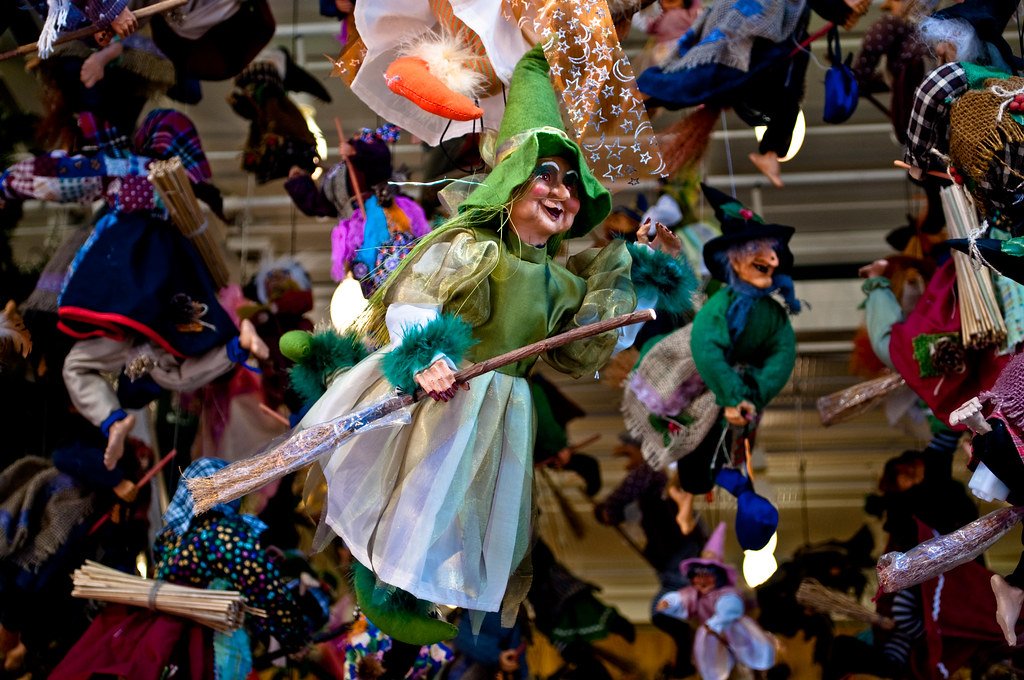La Befana: A History Of Italy’s Annual Epiphany Tradition
In Italy, a country that exudes centuries-old traditions rooted in Christianity, there exists a holiday that captures the imagination of both young and old alike every Jan. 6.
The holiday — known as La Befana — is a unique blend of religion and folklore that marks the end of the Christmas season.
La Befana is often referred to as the “Christmas witch,” a character who plays a key role each January in the country’s Christmas tradition. Her origins can be traced back to ancient times, a blend of pagan and Christian belief that have been fused to create a mystical figure that brings toys to children.
READ: Gen Zers And The Decline Of Christianity In Europe
The name “Befana” is derived from the Italian word “Epifania” — meaning Epiphany or Three Kings Day — the Christian feast day that commemorates the visit of the Magi to the baby Jesus.
La Befana’s origin story
Photo by Simone Zucchelli via Flickr
La Befana is depicted as an elderly, hunchbacked woman with a long nose, pointy hat and a broom. She is said to ride that broomstick and travel throughout Italy on the night on Jan. 5, on the eve of Epiphany, to deliver gifts to children. Like Santa Claus, La Befana rewards well-behaved children with treats, while naughty ones get lumps of coal or even garlic.
The story behind La Befana is heartwarming and poignant. Legend has it that the Magi, on their journey to see Jesus, stopped at the tiny home of La Befana and invited her to join them on their quest.
She declined the invitation, citing the need to tend to her many household chores. Days later, filled with regret, La Befana set out on her own to try and find the newborn Jesus. Despite her efforts, she could never locate the manger in order to give Jesus a gift.
Many believe the name Befana, however, is derived from the Italians' mispronunciation of the Greek word “epifania” or “epiphaneia.” Others point to the name being a derivative of Bastrina, the gifts associated with the Roman goddess Strina.
In the book “Domestic Life in Palestine,” by Mary E. Rogers notes:
But an “Essay on the Fine Arts,” by E. L. Tarbuck, led me to believe that this custom is a relic of pagan worship, and that the word "Bastrina" refers to the offerings which used to be made to the goddess Strenia. We could hardly expect that the pagans who embraced Christianity could altogether abandon their former creeds and customs. Macaulay says, “Christianity conquered paganism, but paganism infected Christianity; the rites of the Pantheon passed into her 'worship, and the subtilties of the Academy into her creed.” Many pagan customs were adopted by the new Church. T. Hope, in his “Essay on Architecture,” says: “The Saturnalia were continued in the Carnival, and the festival with offerings to the goddess Strenia was continued in that of the New Year.”
Another theory connects the tradition of exchanging gifts to an ancient Roman festivity in honor of Janus and Strenia celebrated at the start of the year.
In the book “Vestiges of Ancient Manners and Customs, Discoverable in Modern Italy and Sicily,” John J. Blunt wrote:
This Befana appears to be heir at law of a certain heathen goddess called Strenia, who presided over the new-year's gifts, “Strenae,” from which, indeed, she derived her name. Her presents were of the same description as those of the Befana — figs, dates, and honey. Moreover her solemnities were vigorously opposed by the early Christians on account of their noisy, riotous, and licentious character.
La Befana is celebrated in many parts of the world where Italians emigrated at the turn of the 20th century.
Photo courtesy of Canada Post
In the United States, children’s book author Tomie dePaola penned, “The Legend of Old Befana,” in 1980. In it, dePaola retells the story of who La Befana’s was and her never-ending quest to find Jesus.
In Canada, another country with a large Italian community, she was honored with a postage stamp in 1992. In parts of South America — where the tradition to celebrate Three Kings Day has always been strong since the arrival of Christianity by Spanish colonizers — La Befana is marked to end the 12 days of Christmas.
Link to Three Kings Day
Her annual pilgrimage throughout Italy in search of Jesus features La Befana entering homes through chimneys and windows, then leaving behind gifts and sweets in stockings hung by the fireplace.
In exchange, families often leave a small glass of wine or a plate of food for her as a token of their appreciation.
The celebration is not limited to gifts. In many cities throughout predominantly Catholic Italy, it also features lively street festivities and in small markets. Often, processions featuring men and women dressed as La Befana take place on Jan. 6.
One of the most iconic celebrations takes place in the capital Rome, where a large parade is organized and participants reenact the arrival of the Magi. In fact, central Italy — once home to the Papal States — is where the tradition is often most felt.
In recent decades, La Befana has become an integral part of Italian culture, embodying both the spirit of generosity and the religiosity of the holiday season.
While Italian children still receive gifs on Jan. 6, the tradition of Santa Claus — with gifts given on Dec. 25 — has in some cases supplanted La Befana in recent decades.
Clemente Lisi is the executive editor of Religion Unplugged. He previously served as deputy head of news at the New York Daily News and a longtime reporter at The New York Post. Follow him on X @ClementeLisi.


